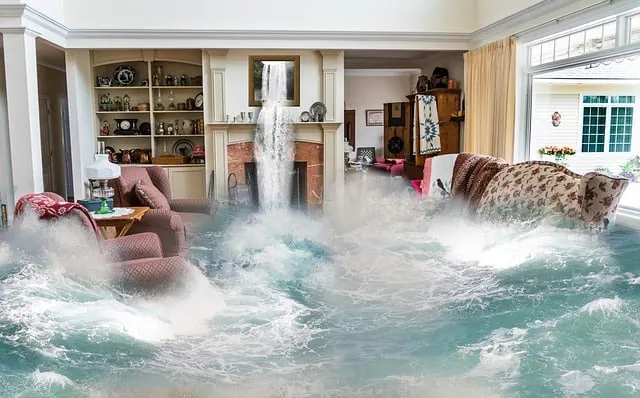
Natural disasters happen anywhere and at any time. They can cause immense damage to homes and property, and they can even be deadly in some cases. Families need to have a ready plan in place if a natural disaster strikes. Here are some steps that you can take to protect your family against natural disasters.
Prepare a Disaster Plan
This also includes a list of emergency contacts, a safe place to meet, and an evacuation route. Ensure every family member is familiar with the plan and knows what to do in an emergency.
How to prepare a disaster plan:
- Choose an out-of-town contact. This person should be someone you can reach in case of an emergency and who can also coordinate help from afar if need be.
- Decide on a meeting place. This should be somewhere close to your home but outside the evacuation zone. In case of separation during a disaster, this will be the place where you can regroup.
- Plan your evacuation route. Find at least two ways to evacuate your area if one is blocked by debris or traffic. Practice your route with your family, so everyone knows what to do and where to go.
- Download a disaster app. Many apps are available that can provide you with information about local emergencies and where to find shelter.
- Put together an emergency kit. This should include items like non-perishable food, water, a first-aid kit, a flashlight, and extra batteries.
Know the Risks
Familiarize yourself with the types of natural disasters common in your area. This will help you be better prepared if one should occur.
How to find out the risks:
- Check the website of your local emergency management office or department of public safety.
- Visit the FEMA website for information about specific hazards in your area.
- Look up your state’s hazard mitigation plan. This will provide information about the steps your state is taking to reduce the risk of natural disasters.
- Talk to your insurance agent about what your policy covers types of natural disasters.
Make Sure Your Home is Prepared
Always protect your home and property from damage in case of a natural disaster. This can include reinforcing doors and windows, installing storm shutters, and securing loose items outside.
How to prepare your home:
- Inspect your home for potential hazards. Look for loose shingles, cracks in the foundation, or overhanging tree branches.
- Make necessary repairs. Fix any hazards you find so that your home is as safe as possible.
- Reinforce doors and windows. Install storm shutters or plywood over windows to protect them from high winds or flying debris.
- Secure loose items outside. Bring in any outdoor furniture, grills, or toys that could be blown around in a storm.
Ensure Your Insurance is Up to Date
After a home or property damage, it is crucial to have insurance that will cover the cost of repairs. Make sure that your policy is up to date and covers the types of damage caused by natural disasters in your area.
What to check on your insurance
- Check the expiration date on your policy to make sure it is still in effect.
- Ensure you have the right amount of coverage. This should cover the cost of rebuilding your home if it is destroyed.
- Make sure you have flood insurance if you live in an area at risk for flooding.
- Talk to your agent about what your policy covers types of natural disasters.
- Review your policy every year to make sure it is still adequate.
Earthquake insurance in Utah or other disaster-prone areas requires you to have a separate policy. It is not included in standard homeowners insurance policies.
Prepare Financially
In addition to having insurance, you can take other financial steps to protect yourself in case of a natural disaster.
How to prepare financially:
- Keep important documents safe. Store copies of important documents like your birth certificate, passport, and insurance policy in a waterproof and fireproof container.
- Have an emergency fund. Set aside money to cover repairs or evacuation if your home is damaged in a disaster.
- Know your credit score. It helps apply for a loan to help with repairs after a natural disaster.
- Stay current on your bills. This helps avoid late fees and penalties if you have to miss a payment due to an evacuation or power outage.
- Review your policy every year to make sure it is still adequate.
Be Aware of the Warning Signs
Natural disasters can often be predicted, giving you time to take steps to protect yourself and your family. Follow on weather reports and warnings from local officials so that you can be prepared in advance.
How to respond when you hear a warning:
- Take shelter immediately if you are in an area at risk for a natural disaster. This may mean evacuating your home or going to an emergency shelter.
- Follow the instructions of local officials. They have the most up-to-date information about the situation and how best to stay safe.
- Stay tuned to news and weather reports. This will help you stay informed about the situation and know when it is safe to return home.
Natural disasters can be scary, but you can minimize the risks to your family if you are prepared. Follow these steps to ensure that you and your family are as safe as possible if a natural disaster strikes.
- Sagittarius Man & Gemini Woman Love and Sex Compatibility - January 31, 2024
- Taurus Ascendant Rising Personality Traits in Men (Guide) - January 31, 2024
- How to Seduce and Attract a Sagittarius Man (Seduction Tips) - January 31, 2024
